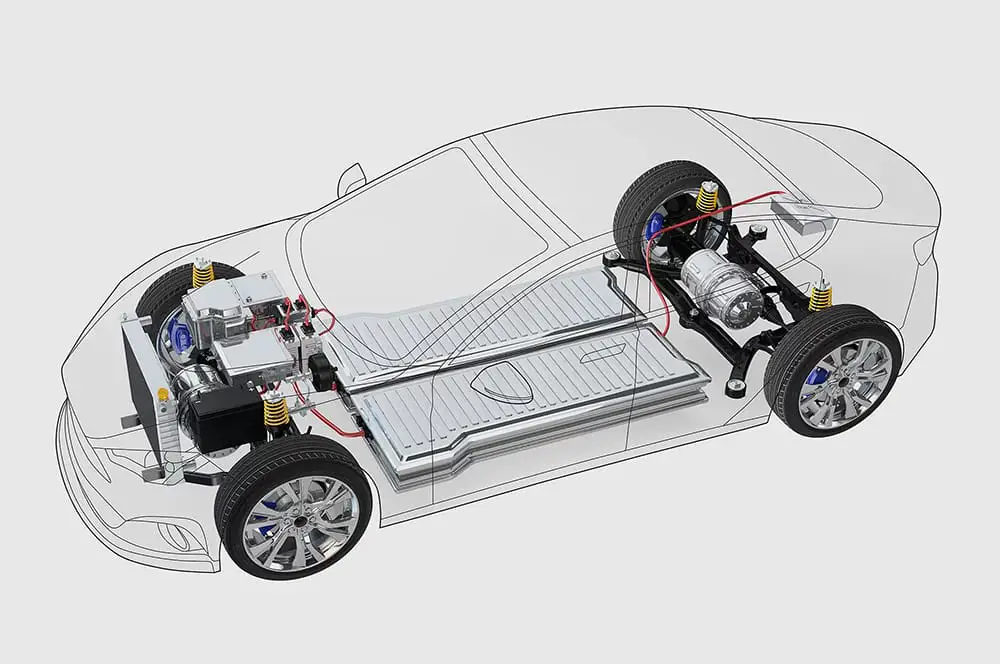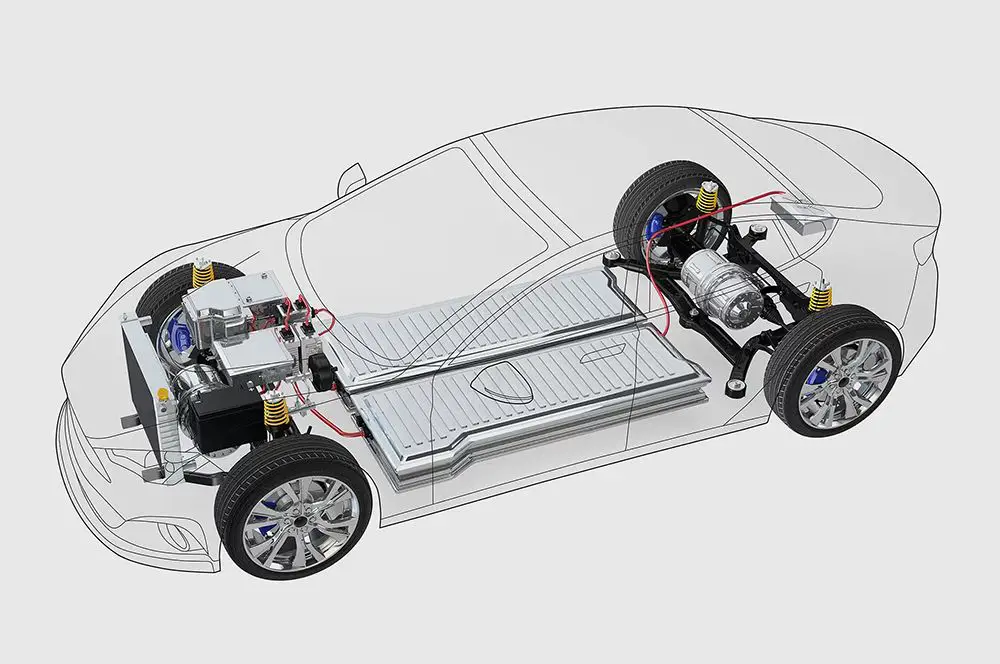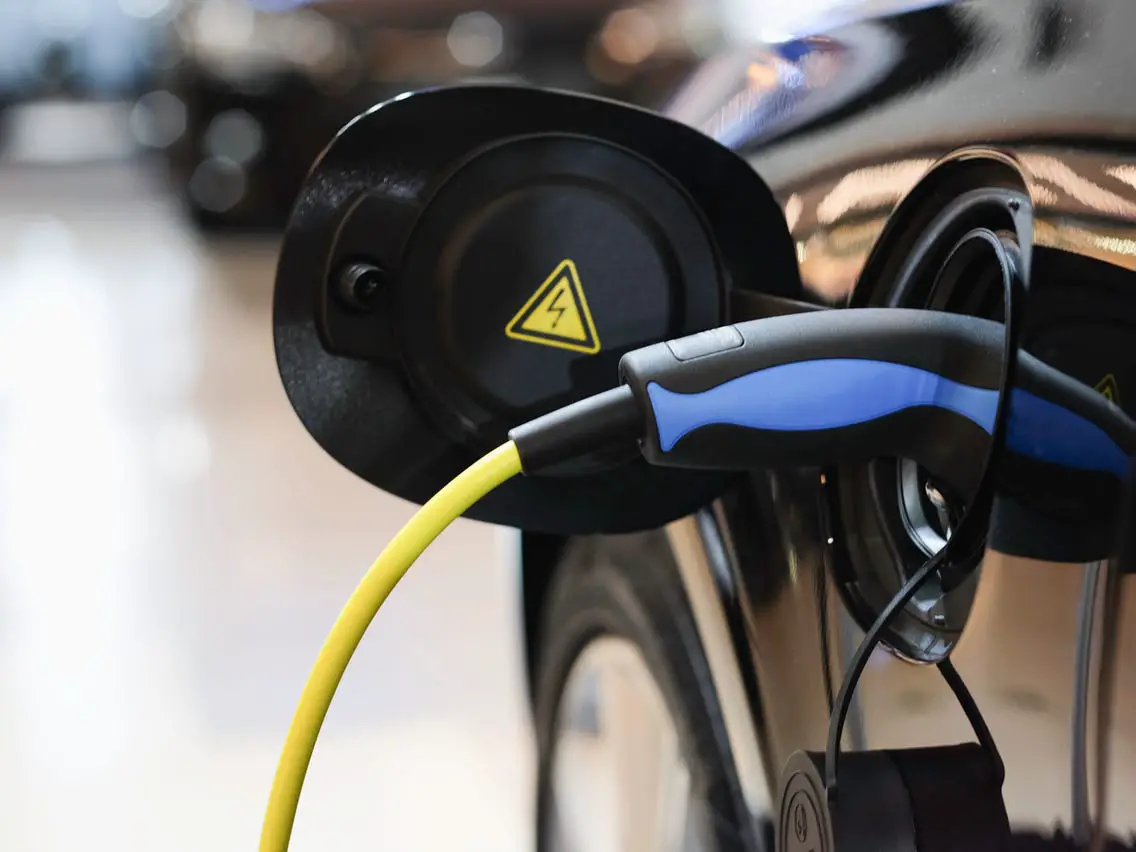Wireless battery management system for EVs.
Batteries should be monitored carefully when being charged and discharging, irregular voltage can hasten battery wear or trigger a fire or explosion. Therefore circuitry is included to monitor groups of perhaps 16 individual cells.


Batteries should be monitored carefully when being charged and discharging, irregular voltage can hasten battery wear or trigger a fire or explosion. Therefore circuitry is included to monitor groups of perhaps 16 individual cells. The cells are currently connected to the primary battery monitoring system by twisted pairs of copper wire—which adds a lot of mass, cost, and opportunity for failure at all these connection points.
A Battery Management System (BMS) is an electronic brain that manages a rechargeable battery cell or pack by keeping track of its state. Majorly the current, voltage, temperature, state of charge, and secondary conditional data are used to control the battery's environment and balance the cells in the pack.
The use of wireless solutions in battery management offers designers the ability to lighten the load of an electric vehicle and thus balance the electrical charge while meeting the highest standards of functional safety to improve reliability. The battery is the main element of electric cars: more cells provide more charging capacity, which means longer distances to travel before needing a recharge.
Each cell must be monitored to maximize battery performance. Since a typical EV has 100 cells or more, the ability to remove bulky and heavy cables improves system reliability. The new battery management concept includes a proprietary wireless connectivity protocol and a set of electronic chips for monitoring parameters. The use of wireless eliminates the potential for failure in wiring exposed to vibration, humidity, and other problems. It makes access to the batteries themselves for maintenance easier.

The older EV batteries, once they have reached the end of their useful life in a vehicle, can also be recycled and reused in battery backup units at data centers, or in energy storage units connected to solar or wind power generation plants – where wireless capabilities make monitoring easy.
Gina Aquilano, director of technology, Automotive Electrification & Sustainable Energy at semiconductor firm Analog Devices, gave exclusive insight to Automotive Manufacturing Solutions on developing new ecosystems.
She highlighted some of the existing barriers to manufacturers switching to EVs, such as the ongoing disruptions relating to Covid and semiconductor and labor shortages and how the new wireless system impacts this.
“Lithium-Ion battery supply is front and center to enable high volume EV production,” Aquilano said. “We are seeing more diversification strategies to balance the supply and demand for the raw materials to produce these new batteries.”
The wireless battery management system permits automakers to evade reinventing complicated wiring diagrams for each new vehicle and ensures battery scalability. It could be a potential breakthrough in meeting demand. Electric vehicles are around 16% heavier on average compared to ICEs, and thus lightweight has become a priority for designers and manufacturers.
Acquilano explained how ADI’s wBMS technology eliminates the traditional wired harness, reducing up to 90% of the wiring and 15% of the volume in the battery pack. “For manufacturers, such as Lotus, the new battery integration is essential for successful lightweight. The body architecture of every Lotus car is designed for peak performance,” she said.
Servicing – A secure wireless means the condition of the battery pack is well analyzed by diagnostic equipment in the garage without using the pack. In case of any problem, a faulty module can easily be removed and replaced. A wireless configuration simplifies the installation of a new module in the battery system.
Second life – with the increasing number of vehicles, a market is emerging for ‘second life’ batteries recovered from scrapped EVs and repurposed for applications such as renewable energy storage systems and electric power tools. It additionally creates a new source of value for EV manufacturers, responsible for the recycling or disposal of the batteries in scrapped EVs as BMS allows a simpler integration of the modules for second-life applications.
Disposal – the recyclable metal and potentially hazardous materials inside a battery pack require approved and regulated disposal arrangements. The simple connections and absence of a communications wiring harness make removing battery modules easier and quicker than that of a wired battery.
Source:
i) Stephan Prüfling and Norbert Bieler (2022) Enabling smart battery ecosystems solutions through higher battery performance, greater lifetime, and cost value
ii) Maurizio Di Paolo Emilio(2021) CES 2021: Wireless Battery Management to increase Driving Range in EVs
iii) Jason Dunn (2021) What wireless battery management systems mean for sustainable EV manufacturing




